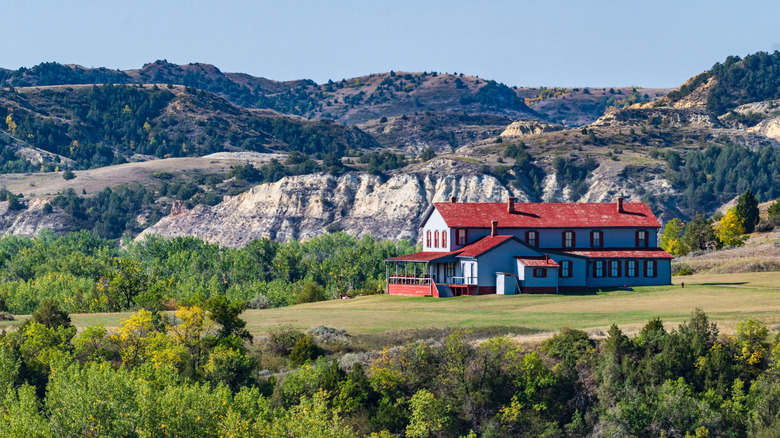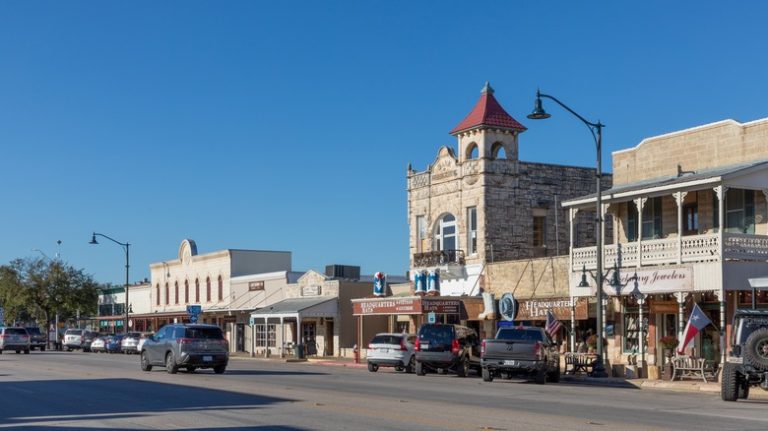
According to the U.S. Census Bureau, a population of 924,669, as of July 2024, benefited from South Dakota’s lower cost of living. As per a 2024 map from the Bureau of Economic Analysis, which compared regional price parity — the difference in goods and services prices between states expressed as a percentage — South Dakota had an index score of 88.1. This ranks it among the top three states for lower prices on goods and services, placing South Dakota’s cost of living 11.9% below the national average.
Apart from the cost of living, South Dakota offers a wealth of attractions. In terms of famous U.S. landmarks, Mount Rushmore is quintessentially American. Visitors can also discover the world’s seventh longest cave at Wind Cave National Park, or embark on an extensive hike through the Badlands or the Black Hills. For those with cultural interests, there are numerous museums like the Journey Museum dedicated to South Dakota’s Indigenous inhabitants, as well as fine and contemporary arts at the South Dakota Art Museum and Heritage Hall Museum and Artifacts. Moreover, the Badlands Observatory offers night tours and telescopic views of the cosmos to inspire wonder. Festivals, including Oktoberfest, car and quilt shows, and Autumn Fest featuring food trucks, pumpkin carving, and local vendors, add to the array of activities that make living in South Dakota feel welcoming.
Owning or renting a home is more affordable

Everyone needs a place to live, and South Dakota offers that opportunity at a lower cost than much of the country. According to the U.S. Census Bureau, of a housing inventory of 423,789 homes, 68.6% are owner-occupied. This is higher than the national median of 65%, with the cost of homeownership in South Dakota likely contributing. The National Association of Realtors reports the median price of a U.S. home in April 2025 at $414,000. Meanwhile, according to Zillow, the median home value in South Dakota, as of April 2025, was $316,374, up by 2.7% from 2024, making it appealing for those looking to avoid buying a home in an expensive city and still see property appreciation. By March 2025, the median sale price of homes in South Dakota was even lower at $306,333.
Additionally, according to Zillow, the median U.S. rent as of June 2025 was $2,100 per month. South Dakota demonstrates that renters are succeeding in the U.S., offering a competitive median rental cost. Zillow data shows the average rent in the state as of June 2025 was just $1,149 — a $62 decrease from the previous year.
The cost of living makes the grade

The overall cost of living in South Dakota contributes to it being both one of the cheapest states to live in and to retire in the U.S. According to DakotaPost, even Sioux Falls, the state’s most expensive region, is 8.7% less expensive than the rest of the country, despite being 3.4% more expensive than the rest of South Dakota. Transportation costs are also lower, with drivers spending an average of $985 per year on gas. According to the U.S. Bureau of Labor Statistics, U.S. motorists spent an average of $2,449 on gas in 2023. As per Consumer Affairs, South Dakotans spend around 50 cents less per gallon of mid-grade gas than the national average — $3.61 per gallon.
With new Trump tariffs potentially increasing car prices, getting a discount on car insurance is crucial. As noted by DakotaPost, the average car insurance premium in South Dakota was $1,434 versus $1,517 nationally. Additionally, considering the cost of raising a child, a March 2025 LendingTree study found daycare in the U.S. costs an average of $17,836 per year. In contrast, South Dakota’s childcare is significantly more affordable, with the Economic Policy Institute reporting childcare costs at $8,680 in the state as of February 2025.
Tax breaks for South Dakota residents

South Dakota’s taxation is advantageous as it’s one of several states without an income tax. According to DakotaPost, the average South Dakotan pays around $482 annually in income taxes, compared to the national average of $6,542. The tax burden per citizen in South Dakota is competitively low compared to other states, with a combined federal, state, local, property, and sales taxes totaling an average of $2,174 per year. This is nearly $1,000 less than the national average of around $3,151 annually.
According to South Dakota’s Department of Revenue, while property owners must provide the full market value of their properties for tax assessment, this amount is equalized to 85% based on a calculable number — the equalization factor — reducing the taxable value to 85%. So, a home valued at $300,000 would be taxed at $255,000. Therefore, not only is home ownership more affordable in South Dakota than in many other U.S. states, but the taxes paid on such properties are also lower.
“`






